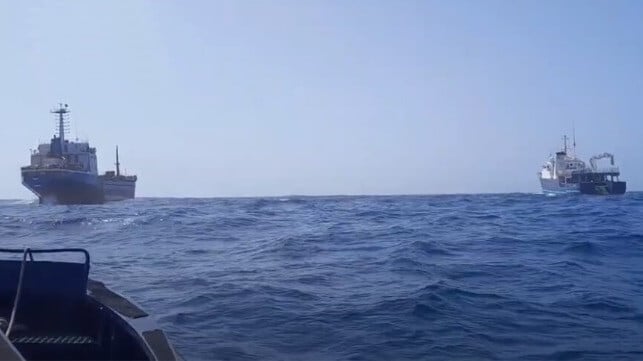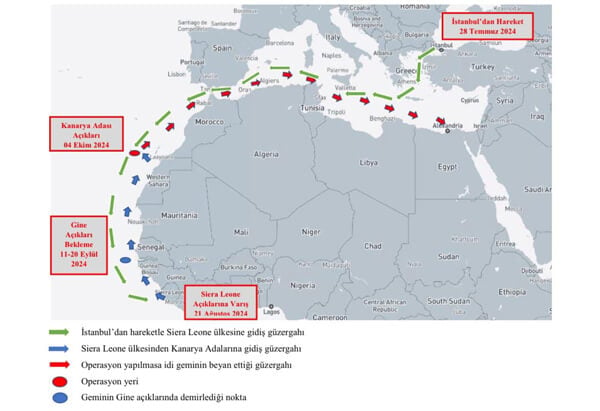Cargo Ship Smuggling Cocaine Draws Scrutiny Due to Unique Routing

Turkey’s Ministry of Internal Affairs responded to last week’s capture of a Turkish-owned cargo ship involved in drug smuggling promising cooperation with the ongoing investigation by Spanish and French forces. A Turkish-owned cargo ship drew the attention of the authorities after it embarked on what the Spanish authorities termed a unique “uneconomical” voyage.
Working together as part of an ongoing operation in the Mediterranean and Atlantic, Spanish and French authorities apprehended the Ras while the vessel was 130 miles from Lanzarote. Built in 1994, the cargo ship is 2,500 dwt and 230 feet (70 meters) and is currently registered in Tanzania. According to databases, the ship appears to have changed owners in July 2024.
Spain’s police and tax authority reports it was attracted to the vessel because of the unique nature of its movements, something the Turkish authorities are also confirming after the investigation. Spanish and French forces patrolling in the region were alerted to the ship after an EU monitoring operation based in Lisbon and Spanish forces detected the movements of the ship.
“On this occasion, investigators were struck by the fact that the cargo ship was undertaking an uneconomical voyage, having set sail from Turkey, sailed across the Mediterranean to the Atlantic front, then to Sierra Leone and Guinea-Bissau without having loaded or unloaded any merchandise and, after carrying out erratic maneuvers, heading for the Iberian Peninsula,” stated the Spanish authorities.
The Special Operations patrol boat Petrel of Spain’s Customs Surveillance Service and the French customs patrol boat DPF-3 intercepted the Ras on October 4. Aboard they found a crew of 10 consisting of seven Turkish nationals including the captain, two Azerbaijani nationals, and one Dutch citizen. All of them were initially detained and questioned and now have been arrested as part of the ongoing investigation.
“The narcotic substance was found in a compartment between the cargo ship's holds with very difficult access and outside the main corridors of the ship, which at first made it difficult to locate,” the Spanish forces reported.
The raid seized at least 4,000 kilos of cocaine. The Spanish authorities said they suspected the cocaine would have been offloaded onto smaller boats for transfer to the Spanish coast.
“When the route, port, and speed information of the ship named Ras are analyzed together, it is evaluated that the seized narcotic substances were brought from South American countries by means of ‘ghost ships’ (without AIS signal information) the Turkish ministry said in its statement. These ghost ships often lack registry and proper documents being used by international smugglers on one-way trips to ferry narcotics. The Turkish ministry contends the cocaine was “transferred to the ship on the Atlantic Ocean off the open ocean of Guinea or Mauritania, and then shipped to Europe.”

Turkish authorities released the track chart for the vessel's movements (Turkey's Ministry of Internal Affairs)

that matters most
Get the latest maritime news delivered to your inbox daily.
Their analysis reports that Ras left the Istanbul area on July 28 traveling to Casablanca and then to Sierra Leone. The ship anchored off Freetown, Sierra Leone for 20 days until September 11. It then moved northward requesting permission for the territorial waters of Guinea and Guinea-Bissau before anchoring at the port of Bissau. It departed on September 21, performing “low-speed maneuvers” off Guinea-Bissau on September 23 and 24, before sailing off Mauritania where it reduced speed on September 28 and 29. The voyage had resumed with the ship declaring it was bound for the Port of Alexandria, Egypt when it was intercepted on October 4.
The Ministry of Internal Affairs says it immediately contacted the Spanish Narcotics Police. They said there was a collaboration ongoing which resulted in the examination of the vessel’s movements since July 19 when databases recorded the transfer of ownership.
